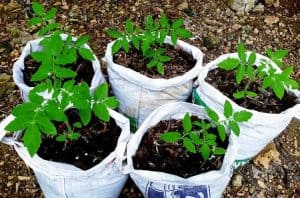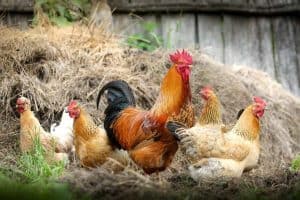Does Chicken Poop Make Good Fertilizer?
The reason for this article is that here in the Philippines chicken poop – chicken manure – is used liberally as a fertilizer by the home gardener. At least in the provinces, which makes up most of the country. In the western world, that’s not the case.
Recently, I wanted to grow some tomatoes here in Cebu, Philippines. There is a major problem, however. The Covid-19 lockdown would not permit me to purchase any fertilizer online (nor tomato seeds). And, to my knowledge, there’s nowhere that sells plant fertilizer near me. The nearest place would be Cebu City which is 46km (30 miles) distant. That would be a four-hour drive there and back. Yes, the traffic is that bad!
Of course, given the circumstances, it makes sense to turn to work with alternative means. But truth be told – I’ve always been concerned that chicken poop would have too much of some nutrients and not enough of others. Hence, at least in my own mind, I had already devalued its benefits.
Nevertheless, what else to do?
So chicken poop it is! And so far so good. The tomato plants – all five of them, are looking healthy. They’re about five weeks old (planted as seed) and measure around 6-8 inches in height as I write this.

Benefits of Chicken Poop as Fertilizer
The Agricultural Research Service (ARS) has conducted a variety of chicken litter studies over the years. One such study (likely there are more than just one) demonstrated that chicken litter (chicken poop mixed with chicken bedding – typically straw or sawdust) offers large benefits over other fertilizers in terms of agricultural crop production.
In the south of the States, as an example, weed control problems and other problems that are associated with GM cotton crops have encouraged growers to utilize chicken litter as a replacement for synthetic fertilizers.
Research found that when used on cotton fields poultry litter increased yields by approximately 12%. Plus, the result was improved overall soil conditions and fewer problems encountered which were caused by pests and diseases.
The presumption is that the same would occur with most other crop types, including tomatoes.
Chicken litter has many nutritional benefits for plants – high nitrogen content, high in phosphorus, and high in potassium. High in many other trace elements, too (V, Cr, Mn, Co, Ni, Cu, As, Cd, Sn, Sb, Tl, Pb).
Where to Get Chicken Poop From
Obviously, the vast majority of western gardeners do not have the same ready supply of chicken litter that’s available to gardeners in the Philippines’ provinces. So where do you get it from?
Small-scale poultry farmers will likely be more than happy to provide a few bags of chicken litter to local gardeners.
You can also buy chicken poop from garden centers. It’s available in bags of between 10 and 40 lbs. Mind you, these bags are not cheap.
How to Use Chicken Poop for Fertilizer
Just the same way you would cow manure. But you don’t need nearly as much chicken manure as cow manure to experience similar benefits.
Add the chicken poop or chicken litter beneath your plants. Or, if you have a lot of it, spread it over your soil more liberally.
You can add chicken poop or chicken litter to your compost. The composting process will thus be speeded up and will benefit from plenty of additional nutritional goodies (from the chicken manure/litter).
A further benefit of adding chicken poop to the compost pile is that it can kill off bugs and bacteria that may have found a home in the poop. If you’re unsure of the source of the chicken poop/litter adding it to the compost heap is a good way to go.
You can also use chicken poop/litter to make a compost ‘tea’. This ‘tea’ is then poured directly onto your plants – ideal for raised beds and potted plants. The ‘tea’ essentially acts as a high energy drink, if you will.
No matter which way you prefer to use your chicken poop/litter, you’ll find it to be of great benefit – benefit without the need for synthetic chemical additions.
Image by klimkin from Pixabay

